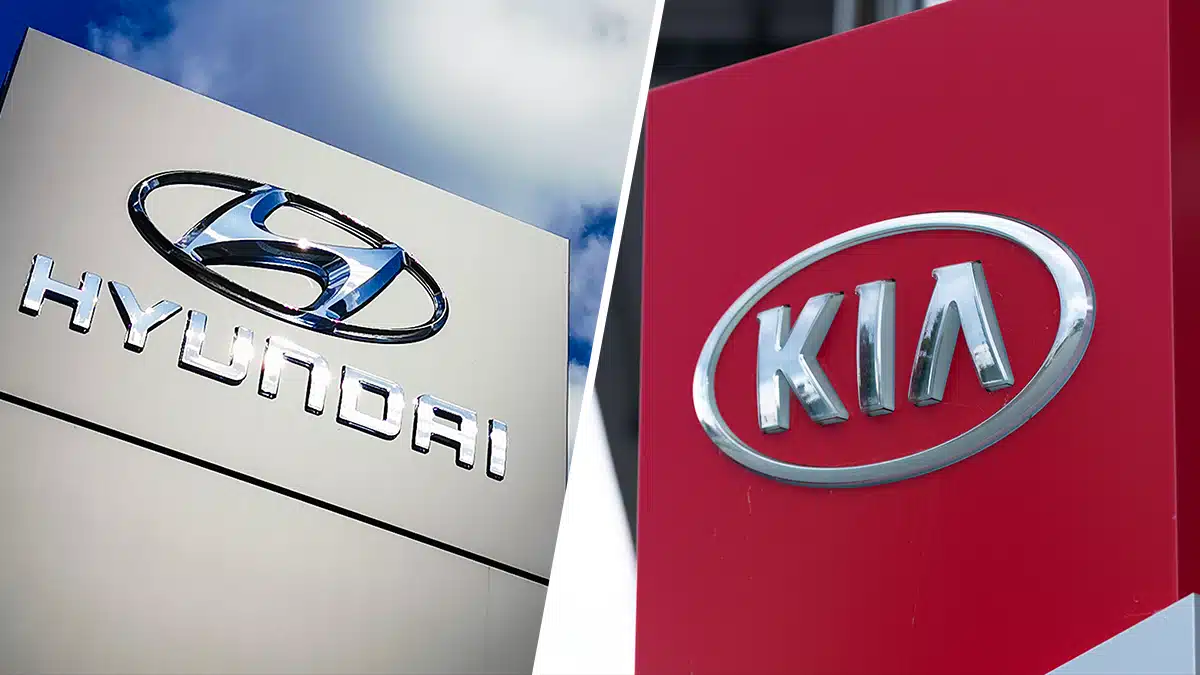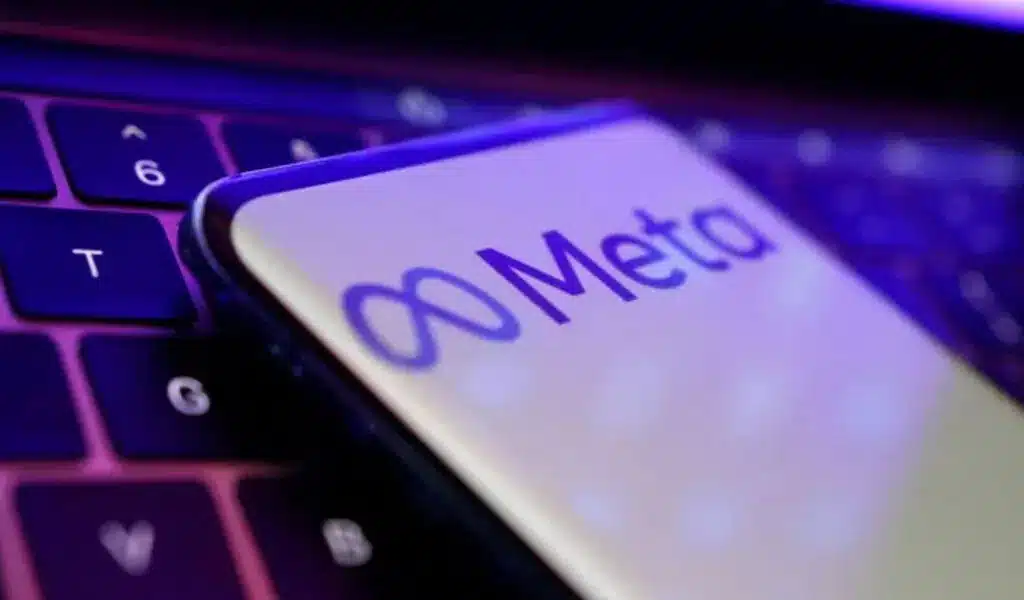Business
After A Rash Of Stolen Cars, Hyundai And Kia’s New Anti-Theft Software Is Showing Results

According to a new examination of insurance claim data, more than a year after Hyundai and Kia deployed new anti-theft software updates, thefts of vehicles equipped with the new software are declining – even while thefts overall remain astonishingly high.
The automakers began releasing the updates in February, following a tenfold surge in thefts of specific Hyundai and Kia models in only three years, prompted by a series of social media posts that demonstrated how to steal the vehicles.

Hyundai | CNN Image
After A Rash Of Stolen Cars, Hyundai And Kia’s New Anti-Theft Software Is Showing Results
According to the Highway Loss Data Institute, “whole vehicle” theft claims—insurance claims for the loss of the entire vehicle—are 64% lower among Hyundai and Kia automobiles that have had the software upgrade than cars of the same make, model, and year that have not had the upgrade.
“The companies’ solution is extremely effective,” Matt Moore, senior vice president of HLDI, an industry association supported by vehicle insurers, said in a statement.
The cars concerned are older Hyundai and Kia models manufactured before 2023, especially vulnerable to theft. Less expensive versions of these automobiles used turn-key ignitions rather than button presses to start, and the HLDI reports that they are nearly twice as likely to be stolen as other vehicles of comparable age.
According to the HLDI, many of these vehicles lack fundamental auto theft prevention technology, such as electronic immobilizers, which are standard on most other vehicles from the same year. Immobilizers rely on a computer chip in the car and another in the key to communicate and ensure that the key is genuine and belongs to the vehicle.
Between early 2020 and the first half of 2023, thefts of Hyundai and Kia models increased by more than 1,000%.
As part of a $200 million settlement, Hyundai and Kia, two closely connected South Korean automobile makers, will begin delivering free anti-theft software upgrades for some of these older models in February 2023. According to the automakers, more than 2 million Hyundai and Kia vehicles have already received the update.
.jpg)
Hyundai | Car Guide Image
Theft rates remain high.
The HLDI analyzed insurance claim data for the calendar year 2023. By the end of the year, just roughly 30% of eligible automobiles had installed the security software.
According to a Hyundai representative, around 61% of eligible Hyundai vehicles have already received the software upgrade. However, not all vulnerable Hyundai and Kia vehicles have the necessary hardware to support the upgrade. Hyundai and Kia have provided steering wheel locks on vehicles that cannot receive the software.
Despite the improved software, the HLDI discovered that older Hyundai and Kia vehicles are still stolen and broken into more frequently than others.
Moore speculated that one possible explanation is that owners need to properly use the vehicles’ new security software. To ensure the anti-theft software works, the vehicle must be locked using a button on the key fob rather than turning the metal key in the door lock.

Hyundai | Money Image
After A Rash Of Stolen Cars, Hyundai And Kia’s New Anti-Theft Software Is Showing Results
Furthermore, he stated that the spate of Hyundai and Kia thefts was partially a fad promoted via social media. TikTok and YouTube videos demonstrated how simple it was to steal these automobiles, and many of the perpetrators were not serious car thieves, he claimed.
“There are certainly news stories indicating that some off the people doing this are just doing it for fun,” Moore told reporters. “It’s probably logical to assume that at some point…stealing these vehicles as a fad is going to burn out.”
SOURCE | CNN
Business
Iconic Tupperware Brands Seeks Chapter 11 Bankruptcy

NEW YORK — Tupperware Brands, which revolutionized food storage decades ago, has filed for Chapter 11 bankruptcy protection.
Tupperware, based in Orlando, Florida, intends to continue operations during the bankruptcy proceedings and will seek court clearance for a sale “in order to protect its iconic brand,” the firm announced shortly before midnight on Tuesday.
The corporation is seeking bankruptcy protection as it attempts to revitalize its operations. Tupperware sales increased slightly during the early stages of the COVID-19 epidemic, but overall sales have been steadily declining since 2018 owing to increased competition. Financial difficulties have continued to mount for the corporation.
Iconic Tupperware Brands Seeks Chapter 11 Bankruptcy
Doubts about Tupperware’s future have persisted for some time. Last year, the company sought extra financing as it warned investors about its capacity to continue operations and the prospect of being delisted from the New York Stock Exchange.
The NYSE issued the company an extra non-compliance warning for failing to publish its annual results with the Securities and Exchange Commission earlier this year. In recent months, Tupperware has continued to raise concerns about its capacity to stay solvent, with an August securities filing citing “significant liquidity challenges.”
Tupperware filed for bankruptcy on Tuesday, reporting more than $1.2 billion in total obligations and $679.5 million in total assets. The company’s shares have plunged 75% this year and finished Tuesday at around 50 cents each.
“The reality is that the decline at Tupperware is not new,” Neil Saunders, managing director of GlobalData, wrote in a commentary on Wednesday. “It is very difficult to see how the brand can get back to its glory days.”
Saunders explained that many consumers have been switching to cheaper home storage brands, and that competition has increased over time, particularly with the advent of online platforms like Temu and retailers like Target beefing up their own home storage and kitchenware brands.
Tupperware’s origins go back to 1946. According to the company’s website, shortly after the Great Depression, chemist Earl Tupper found inspiration while making moulds at a plastics factory, embarking on a mission to create an airtight seal for a plastic container, similar to that on a paint can, to assist families in saving money on food waste.
The brand enjoyed tremendous expansion in the mid-twentieth century, particularly with the introduction of Tupperware parties, which began in 1948. Tupperware parties, in particular, provided many women with the opportunity to run their own businesses from the comfort of their own homes, selling their products to social circles.
The approach worked so successfully that Tupperware finally pulled its products from retailers. In Tuesday’s bankruptcy statement, the firm stated that there are no immediate modifications to Tupperware’s independent sales consultant agreements.
According to court records filed Tuesday, Tupperware now employs over 5,450 people in 41 countries and works with a global sales force of over 465,000 consultants who sell products on a freelance basis in approximately 70 nations.
Tuesday’s announcement also mentioned plans to “further advance Tupperware’s transformation into a digital-first, technology-led company,” potentially indicating a shift towards increased reliance on the brand’s website or more online-focused marketing, though the company did not provide specifics.
In a statement, Tupperware President and CEO Laurie Ann Goldman recognised the company’s recent financial problems and stated that the bankruptcy process is intended to provide “essential flexibility” while it pursues this transformation. She also stated that the brand was not going anywhere.
Iconic Tupperware Brands Seeks Chapter 11 Bankruptcy
“Whether you are a dedicated member of our Tupperware team, sell, cook with, or simply love our Tupperware products, you are a part of our Tupperware family,” Goldman stated in an email. “We plan to continue serving our valued customers with the high-quality products they love and trust throughout this process.”
Goldman, who previously served as CEO of Spanx, was appointed CEO of Tupperware in October 2023, as part of a bigger leadership transition. Over the last year, the corporation has established a new management team.
SOURCE | AP
Business
Facebook Owner Meta Bans Russia State Media Outlets Over ‘Foreign Interference’

LONDON — Meta said it is blocking Russia’s state media organizations from its social media platforms, claiming that the outlets employed misleading strategies to spread Moscow’s misinformation. The Kremlin condemned the news on Tuesday.
The business, which owns Facebook, WhatsApp, and Instagram, announced late Monday that it will implement the restriction over the following few days as part of its attempts to counter Russia’s covert influence operations.
“After careful consideration, we expanded our ongoing enforcement against Russian state media outlets: Rossiya Segodnya, RT and other related entities are now banned from our apps globally for foreign interference activity,” Meta stated in a written statement.
Facebook Owner Meta Bans Russia State Media Outlets Over ‘Foreign Interference’
Dmitry Peskov, Kremlin spokesman, reacted, stating that “such selective actions against Russian media are unacceptable,” and that “Meta with these actions are discrediting themselves.”
“We have a really negative view about this. And this, of course, hinders our chances of normalising relations with Meta,” Peskov told reporters during his regular conference call.
RT, formerly known as Russia Today, and Russia Segodnya both condemned the move.
“It’s cute how there’s a competition in the West — who can try to spank RT the hardest, in order to make themselves look better,” said RT in a statement.
Rossiya Segodnya, the parent corporation of state news agency RIA Novosti and news brands such as Sputnik, stated that Meta’s decision “was not unexpected for us.”
“Meta is a highly politicised organisation. We will continue to work in the countries where we are now present, and this decision will have no impact on our activity,” Rossiya Segodnya stated in a statement.
Meta’s moves came just days after the US announced new sanctions against RT, citing the Kremlin news outlet as being a significant component of Russia’s war machine and efforts to destabilize its democratic enemies.
Last week, US officials said that RT was collaborating with the Russian military and organizing fundraising drives to buy sniper rifles, body armor, and other equipment for soldiers fighting in Ukraine. They further said that RT websites pretended to be credible news sites but were used to promote disinformation and propaganda throughout Europe, Africa, South America, and elsewhere.
Earlier this month, the Biden administration seized Kremlin-run websites and charged two RT workers with sending millions of dollars in covert funding to a Tennessee-based content development company to generate English-language social media videos promoting Kremlin policies.
Moscow has denied the allegations.
Facebook Owner Meta Bans Russia State Media Outlets Over ‘Foreign Interference’
Meta had already taken steps to curb Moscow’s online presence. Since 2020, it has labeled postings and content from state-run media. Two years later, it prohibited Russian state media from running ads and lowering their content in people’s feeds, and the company, along with other social media sites such as YouTube and TikTok, barred European Union users from accessing RT and Sputnik channels after they were sanctioned by Brussels. In 2022, Meta also shut down a vast Russia-based disinformation network that propagated Kremlin talking points about the invasion of Ukraine.
Moscow responded by branding Meta as an extremist group in March 2022, shortly after sending soldiers into Ukraine and restricting Facebook and Instagram. Both sites, as well as Elon Musk’s X, formerly known as Twitter, which is also restricted, were popular among Russians before to the invasion and the accompanying crackdown on independent media and other kinds of critical discourse. The social media services are now only available over virtual private networks.
SOURCE | AP
Business
Instagram Makes Teen Accounts Private As Pressure Mounts On The App To Protect Children

Instagram is making teen accounts private by default in an effort to make the platform safer for minors, amid mounting criticism of how social media affects young people’s lives.
Beginning Tuesday, anybody under the age of 18 who signs up for Instagram in the United States, United Kingdom, Canada, and Australia will be assigned to restricting teen accounts, and those with existing accounts will be transferred over the next 60 days. Teenagers in the European Union will have their accounts updated later this year.
Meta agrees that teens may lie about their age and says they will be required to verify their ages in additional situations, such as when they attempt to register a new account with an adult birthday. The Menlo Park, California company also stated that it is developing technology to detect teen accounts that appear to be adults and immediately place them in limited teen accounts.
Instagram Makes Teen Accounts Private As Pressure Mounts On The App To Protect Children
Teen accounts will be private by default. Private messages are controlled, so teenagers can only receive them from persons they follow or are already linked with. “Sensitive content,” such as footage of individuals fighting or advertisements for cosmetic procedures, will be limited, Meta stated. Teens will also receive notifications if they spend more than 60 minutes on Instagram, and a “sleep mode” will be enabled, which disables notifications and sends auto-replies to direct messages between 10 p.m. and 7 a.m.
These settings will be enabled for all teens, but 16 and 17-year-olds will be able to disable them. Children under the age of 16 must obtain permission from their parents.
“The three concerns we’re hearing from parents are that their teens are seeing content that they don’t want to see or that they’re getting contacted by people they don’t want to be contacted by or that they’re spending too much on the app,” according to Naomi Gleit, head of product at Meta. “So teen accounts is really focused on addressing those three concerns.”
The announcement comes as the firm faces lawsuits from dozens of US states accusing it of endangering young people and contributing to the juvenile mental health crisis by knowingly and deliberately developing features on Instagram and Facebook that addict children to its platforms.
Letitia James, New York Attorney General, called Meta’s statement “an important first step, but much more needs to be done to ensure our kids are protected from the harms of social media.” James’ office is collaborating with other New York officials on how to enforce a new state law aimed at limiting children’s access to what critics call addictive social media feeds.
Meta’s previous efforts to address teen safety and mental health on its platforms have been received with criticism that the adjustments are insufficient. For example, children will receive a notification when they have spent 60 minutes on the app, but they will be free to ignore it and continue scrolling.
That is, unless the child’s parents use “parental supervision” mode, which allows parents to limit kids’ Instagram usage to a set length of time, such as 15 minutes.
Meta’s most recent changes provide parents with more options for managing their children’s accounts. To modify their settings to less restrictive ones, those under the age of 16 will require permission from their parent or guardian. They can accomplish this by enabling “parental supervision” on their accounts and linking them with a parent or guardian.
Meta’s president of worldwide affairs, Nick Clegg, stated this week that parents do not use the parental controls that the business has implemented in recent years.
“Parents will be able to see, via the family centre, who is messaging their teen and hopefully have a conversation with their teen,” she told me. “If there is bullying or harassment happening, parents will have visibility into who their teen’s following, who’s following their teen, who their teen has messaged in the past seven days and hopefully have some of these conversations and help them navigate these really difficult situations online.”
Instagram Makes Teen Accounts Private As Pressure Mounts On The App To Protect Children
Last year, U.S. Surgeon General Vivek Murthy stated that digital corporations place too much responsibility on parents to keep their children safe on social networking platforms.
“We’re asking parents to manage a technology that’s rapidly evolving that fundamentally changes how their kids think about themselves, how they build friendships, how they experience the world — and technology, by the way, that prior generations never had to manage,” Murthy told CNN in May 2023.
SOURCE | AP
-
Election News4 weeks ago
Kamala Harris’ Presidential Campaign Raises $500 Million in 4 Weeks
-
News4 weeks ago
India’s LGBT Blood Donation Ban Remains Despite 2018 Ruling on Gay Sex
-
Entertainment4 weeks ago
Megalopolis Trailer Pulled By Lionsgate Over Fabricated Critics Quotes
-
News4 weeks ago
UK Activates Emergency Measures to Tackle Prison Overcrowding Amid Riot Convictions
-
News4 weeks ago
36 Flights Cancelled, 201 Delayed in Japan after Scissors go missing
-
Tech4 weeks ago
Apple iPhone 16 Rumors: Release Date, Specs, Price, and Design Leaks












































